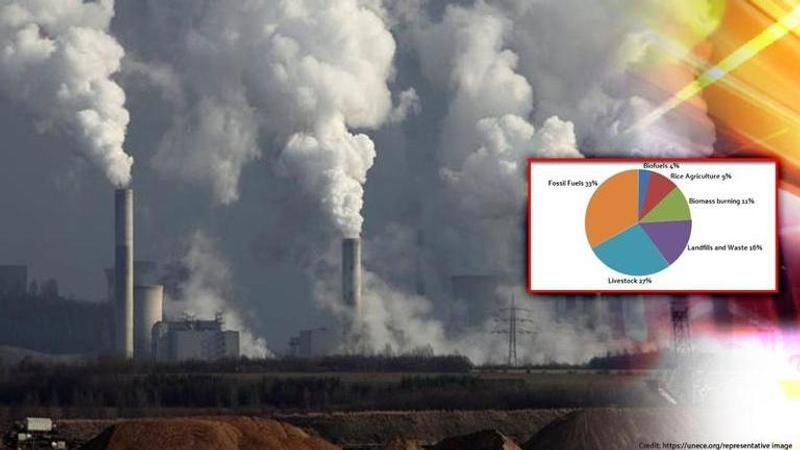Published 12:30 IST, April 9th 2021
Researchers track mysterious plumes of methane over Bangladesh; cause for global warming
The United Nations Economic Commission for Europe (UNECE) observed that methane alone can lead the world into global warming for 100 years

The global emission of greenhouse gas has drastically increased in past few years. According to a Paris-based firm, the 12 highest methane emission rates were observed from Bangladesh alone this year. Methane is one such greenhouse gas that has been 80 times more potent in the last two decades in the atmosphere, than carbon dioxide. This report brings to you the findings of certain firms that specialise in analysing satellite observations to "locate methane gas leaks."
'Methane in the atmosphere can lead the world into 100 years of global warming'
The United Nations Economic Commission for Europe (UNECE) observes that methane alone can lead the world into global warming for 100 years, with a potential that is 25 times higher than that of carbon dioxide. Interestingly, the cause for methane is not just due to industrial emissions, a major reason for the persistence of methane in the atmosphere is due to manure management, wastewater treatment, emissions from coal mines, landfills, and agriculture fermentation.
'Bangladesh has some of the strongest sustained methane emissions to date'
According to a report in a leading American news portal, Bluefield Technologies Inc., analysed European Space Agency data to identify concentrations of methane gas over Bangladesh. Founder of the firm, Yotam Ariel said "Our analysis shows that Bangladesh has some of the highest methane emissions in the world that can be detected by satellites.”
Stephane Germain, president of GHGSat Inc, which also picked up the plumes said “It has the strongest sustained emissions we've seen to date where we can’t clearly identify the source.” Lately, the emissions from Bangladesh are drawing the attention of the world as Bangladesh’s Environment and Climate Change Minister Shahab Uddin observed " We're aware of the problems. The bulk of the methane likely came from rice paddies. When farmers flood their fields, bacteria in the waterlogged soil can produce large amounts of gas. The other source is landfill gas, released when trash breaks down. We’re working to take mitigation measures,” Uddin acknowledged.
More study required to track sources where methane concentrations are rising: EDF
Bangladesh chairs the Climate Vulnerable Forum, whose 48 members represent 1.2 billion people most threatened by climate change. According to the Environmental Defense Fund, man-made methane emissions lead to at least a quarter of global warming. Another firm Kayrros SAS that analysed the methane concentrations in Bangladesh, paddy fields, landfills, leaky natural gas pipelines, and coal stockpiles are the factors for the emission of the gas. The company uses data from the ESA’s Sentinel-5P and Sentinel-2 satellites. It ran a dispersion simulation that takes into account atmospheric conditions such as wind, which can move methane plumes away from their source.
Steven Hamburg, chief scientist at the EDF explains “The methane concentrations we see over Bangladesh are a signal and deserve more study. It will require more work to make reliable quantitative estimates of emissions and determine sources.” The EDF is planning to launch its own satellite to track methane emissions next year, Hamburg hinted. Cutting methane emissions isn’t just an opportunity to reduce global warming, it will also reduce ground-level ozone, and associated damage to human health and crop yields.
Updated 14:21 IST, April 9th 2021




